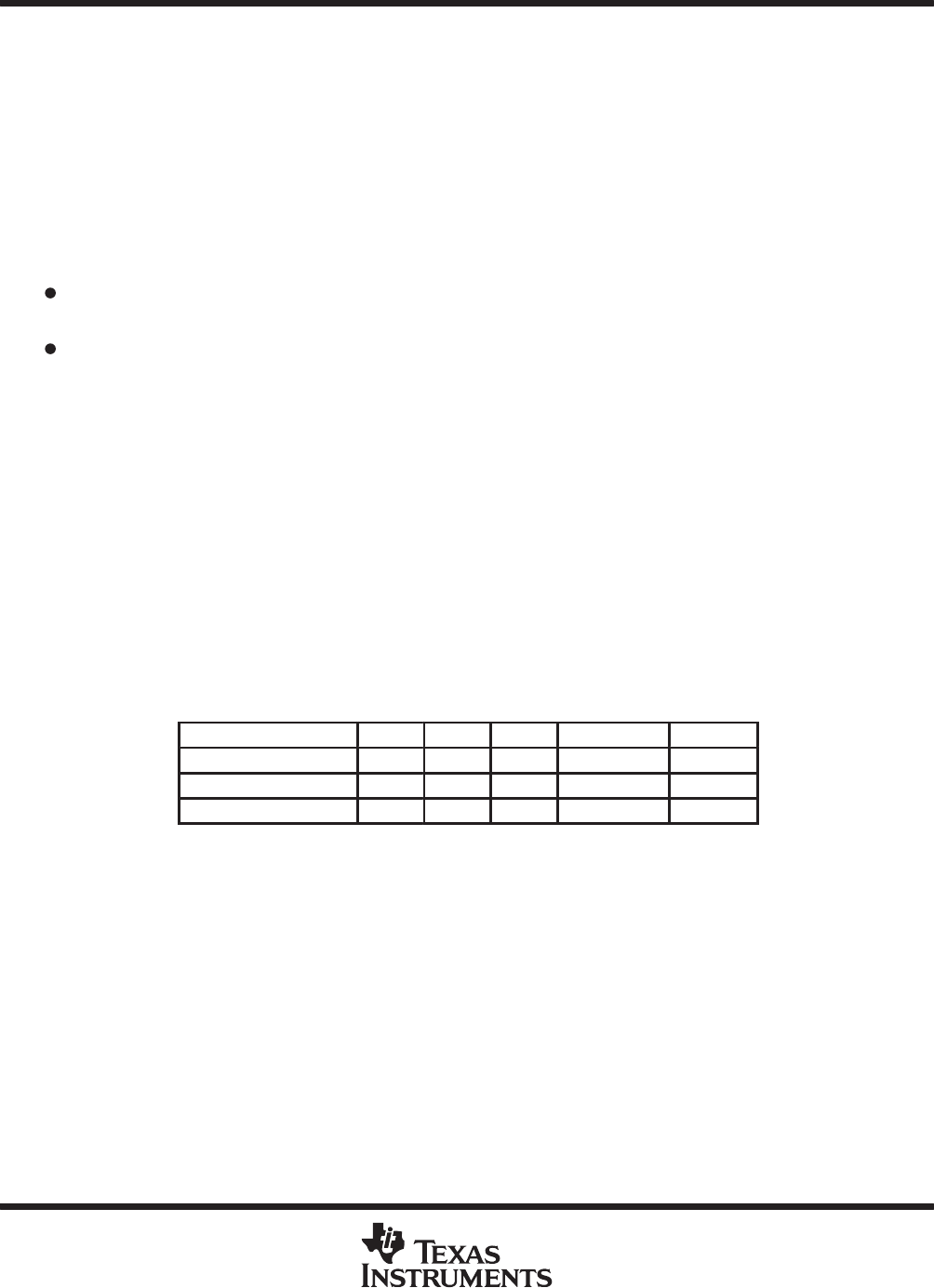
TNETX3270
ThunderSWITCH 24/3 ETHERNET SWITCH
WITH 24 10-MBIT/S PORTS AND 3 10-/100-MBIT/S PORTS
SPWS043B – NOVEMBER 1997 – REVISED APRIL 1999
28
POST OFFICE BOX 655303 • DALLAS, TEXAS 75265
EEPROM interface (continued)
Multiple bus masters are not supported on the EEPROM interface because the ECLK pin always is driven by
the device with a strong 0/strong 1 (i.e., not a strong 1/resistively pulled-up 1).
An Ethernet CRC check is used to ensure the EEPROM data is valid. The 4-byte CRC should be placed within
the EEPROM in four data bytes immediately following the last byte to be loaded (equivalent to locations
0x00FC–0x00FF, just above Syscontrol). As each byte is loaded from the EEPROM, the bits within that byte
are entered into the CRC checker bit-wise, most significant bit first.
A valid CRC always must be provided by the EEPROM. The EEPROM data for the most significant bit of
Syscontrol is withheld until the CRC computed by the device has been checked against the one read from the
EEPROM. If the CRC is invalid:
The reset bit is set to 1 in Syscontrol, load and initd are both 0, and the TNETX3270 does not begin
operation.
The fault LED is illuminated and remains in that state until the TNETX3270 is hardware reset or until load
in Syscontrol is set to 1.
interaction of EEPROM load with the SIO register
The EDIO pin is shared with the SIO register edata bit. The edata and etxen bits must not both be set to 1 when
the load bit is set or the EDIO pin is held at resistive 1 and the EEPROM load fails.
The value of the eclk bit in SIO is don’t care when load is set, but to ensure the EEPROM does not see a glitch
on its clock signal, the load bit should not be set until the minimum clock high or low time required by the
EEPROM on its clock signal has expired since the eclk bit was last changed.
The SIO register is not loaded during the EEPROM download.
summary of EEPROM load outcomes
Table 7 summarizes the various states of register bits and the fault LED for each possible outcome, following
an EEPROM load attempt.
Table 7. Summary of EEPROM Load Outcomes
OUTCOME STOP LOAD INITD
†
FAULT LED ECLK
Successful load 0 0 1 0
‡
Not locked
No EEPROM present 0 0 0 0
‡
Locked
CRC error detected 1 0 0 1 Not locked
†
Assuming the start bit was set to 1 by the EEPROM load
‡
Assuming the fault bit in LEDControl = 0 and no memory system parity error is detected
compatibility with future device revisions
All EEPROM locations that correspond to reserved addresses in the memory map, register bits that are read
only, and register bits that are marked as reserved should be set to 0 to ensure compatibility with future versions
of the device. Failure to do so may result in the unintentional activation of features in future devices. All such
bits are included in the CRC calculation.
